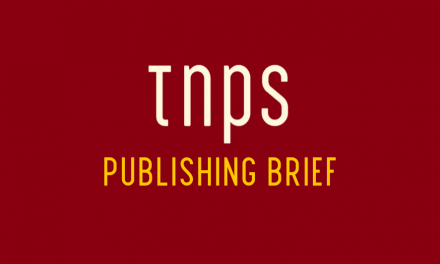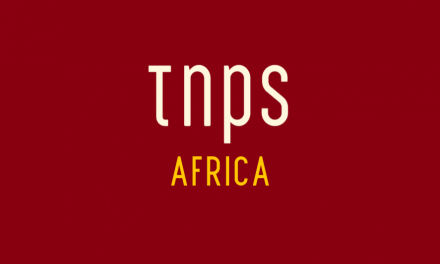Table of Contents
When one thinks of South American book markets Bolivia probably is not among the countries that spring to mind.
But that might change in the next decade as publishers get to grips with the opportunities digital affords to overcome the challenges of reaching readers in South America with print distribution.
With a population of 11 million Bolivia is on par with Portugal, Belgium and Greece in people numbers, and with 7.5 million internet users can match the online population of Austria, Greece and Portugal.
Tomorrow in neighbouring Chile the three day Valparaiso International Book Fair kicks off (Friday 21 through Sunday 23 December) and Bolivia is guest of honour.
We know from a brief report in PublishNewsES that 15 Bolivian authors will be there.
Writes PublishNewsES,
Literary links between (Bolivia and Chile) have been strengthened in the last decade thanks to a sustained cultural exchange, crowned with the publication of the Ulupica anthology, thirteen current Bolivian poets, published by Libros del Cardo in Valparaíso 2017.
That cultural exchange in fact, Los Tiempos explains, extends across three countries – Chile, Bolivia and Peru in the form of
the participation and organization of cross-border festivals, independent fairs and publications on both sides of the mountain range.
Further discussion about the background to the Valparaiso fair is at Los Tiempos.

Follow the 2nd Feria Internacional del Libro de Valparaiso (FILVAL’18) on twitter: @filvachile.
Bolivia itself has four major book fairs each year – La Paz, Santa Cruz, Cochabamba and Tarija.
La Paz this year attracted an impressive crowd of 120,000. No sales numbers available but we understand sales were up on previous years.
Leslie Salazar of the Bolivian Book Camber explained to TNPS,
The Bolivian Book Chamber brings together the Book Chambers of La Paz, Santa Cruz, Cochabamba and Tarija. Each of these fairs has its own particularities, mainly linked to its own regional goals. We are currently trying to unite institutional efforts in order to strengthen strategic alliances with partners and private and state entities, all of them linked to the cultural-literary sector.
In an interview with Salazar we noted that what we are seeing across other parts of Latin America and globally is increased engagement of the public with book fairs and festivals, driven by social media that allows word about the events to be spread cheaply, quickly and far beyond what was possible ten years ago. To what extent is this reflected in Bolivia?
Salazar referred us to Carlos Ostermann for a response.
OSTERMANN: The use of social networks is gradually growing in the three most important book chambers organizing the different book fairs in the country. Little by little, the role of the event promoter is being replaced by that of the strategic marketing actor. In this sense, our last fair had unexpected results, as seen in the larger number of visitors.
TNPS: We are struggling to find any reliable statistics about the size of the Bolivian book market. Can you offer any insights?
Ostermnann then referred us to Ernesto Martínez, whose statistical data can be found (in Spanish) here.
MARTÍNEZ: Based on information provided by the Bolivian Internal Tax Department and Customs Authorities, these are the main data:
In Bolivia, the book turnover in 2017 (last information available) amounted to Bs 225 million, which is approximately US$ 33 million, meaning that each Bolivian spends on average $ 3 on books per year.
Likewise, Bolivia is a net importer of books (US $ 17 million in 2017). In turn, the publishing industry itself is not as solid as in other countries of the region, but its export capacity has increased almost 100%, from an annual average of US$ 600,000 before 2013 to US$ 1.2 million in the last 5 years.
TNPS: The latest figures – https://www.internetworldstats.com/stats10.htm – suggest Bolivia, with a population of 11.2 million (bigger than Sweden or Belgium), has 7.5 million people using the internet, up from just 120,000 in the year 2000. At 67.5% penetration there is plenty of room for expansion, and that will happen sooner rather than later, with the Bolivian Space Agency planning a second telcom satellite launch in 2020, and Entel planning a $60 million Pacific fibre cable route via Peru.
There are 418 million Latin Americans online. Deducting the 149 million Brazilians and adding the 45 million Spanish-speaking Americans using the internet and the 42 million Spaniards online, that means there is potential Spanish-language online market reach of 356 million people, compared to the USA’s online reach of 287 million. And while the USA is near saturation Latin America is at only 66.1% penetration. 80% penetration (likely within next 15 years) would put that reach at well over 400 million.
Do you feel publishers are aware of, and are exploiting fully the opportunities this offers to reach consumers?
MARTÍNEZ: I think that the Bolivian publishers are not aware of this great development of the internet and the potential it implies. This is mainly due to the size of the Bolivian publishing market, but also to the perception that the internet is more a means for the propagation of digital piracy, but not for distribution. Small publishers have made some diffusion work via social networks, but in my opinion, most of their projections in the Spanish-speaking market have been made through alliances with small publishers in other countries.
TNPS: As we see it, digital opportunities in Bolivia take four key forms:
- Enabling awareness and reach for book fairs and festivals as above, which FIL La Paz employed well
- Enabling publishers to promote books direct to consumers without expensive traditional advertising, driving traffic to retail outlets
- Giving publishers new retail opportunities via online bookstores
- Enabling publishers to release books in digital format (ebooks, audiobooks, etc) that can be sold via online retailers within Bolivia and globally, and to sell direct to consumers, offering a far better margin
The impression we get from outside the country is that Bolivian publishers have not embraced digital fully yet. Assuming you agree with that assessment, what do you see as the key factors deterring Bolivian publishers from exploring digital opportunities fully?
MARTÍNEZ: Bolivian publishers are fully immersed in the development of the local market and in that process they have not yet made real progress in terms of marketing (digital or “real”) and their distribution systems are not necessarily good, especially because there is no stable ecosystem for retail. By this I mean that the bookstores that receive the books in some cases delay the payment for the sales they make, and therefore publishers have no other chance but to ignore them when they publish new books, which makes it difficult for publishers to develop promotional campaigns and, therefore, affects the sales of a new book.
On the other hand, we must be careful with the statistics of internet access mentioned by AGETIC. Although there is a high internet penetration rate, Bolivian internet users still access the web to read the news or to contact their friends and family. A large part of the population is very distrustful of digital payment means, and this also affects publishers’ capacity to offer their books in virtual stores. As for book digitization, it is regarded with suspicion by most publishers, mainly because the conversion costs and the commissions that large digital distributors like Amazon or Apple demand. Generally speaking, digital conversion and distribution (which is something that I do personally for several publishers) is “reassigned” to the author who wants his book online. That is, the publisher returns the commercial rights to the author as for digital books.
TNPS: In North America and west Europe Amazon is seen as a challenge to publishers, offering retail reach (both physical and digital) they cannot afford to ignore, but with market dominance that means Amazon can dictate terms.
It seems unlikely Amazon will be interested in setting up in a small country like Bolivia any time soon, and Mexico and Brazil aside it seems Amazon’s Latin American ambitions are not centred on books or ebooks (Amazon has AWS operations in the region and is setting up a call centre in Colombia). But Amazon offers easy access to key Spanish-language markets like Spain, Mexico and the USA itself (more Spanish speakers than Spain) for both print and digital books. How do Bolivian publishers view Amazon? And is there any concern that Amazon might at some stage move on the South American markets causing disruption to the region’s publishing industry?
MARTÍNEZ: In Bolivia, the potential presence of Amazon in Latin America is not yet perceived as a threat.
About the access to Spanish-speaking markets, I do believe that Amazon offers a unique opportunity. That’s why I’m working with several publishers and authors to make their books available on Amazon. However, it is important to understand that the mere inclusion of the book on Amazon will not increase sales. An investment in marketing is required, which, as I mentioned above, is a pending task for publishers.
TNPS: Finally, self-publishing has become a significant part of the publishing industry in the USA, UK and China, and is growing in Mexico and Brazil, thanks to the ease of access offered by Amazon’s Kindle Direct Publishing. How do you see the self-publishing scene in Bolivia and South America?
MARTÍNEZ: In Bolivia, most of the books in circulation are self-published books. Even when the book bears the stamp of a publisher, it is most likely that the author has paid for the entire editing and printing process and only “rents” the publishers to provide seriousness to the book (mainly in poetry and essay) and benefit from their distribution network (a similar process to that offered by lulu.com, for example).
There are several authors who even use KDP for distribution in Amazon. But the real situation is that most of self-published authors focus on the market of their cities of residence because they don’t have the possibility to sell elsewhere.
At which point a reminder that while Amazon’s Kindle store is at least visible in Bolivia, unlike in many parts of the world, and the US site has a Spanish-language option, there are no localised Kindle stores anywhere in South America except Portuguese-speaking Brazil and nine are expected to materialise in the foreseeable future.




